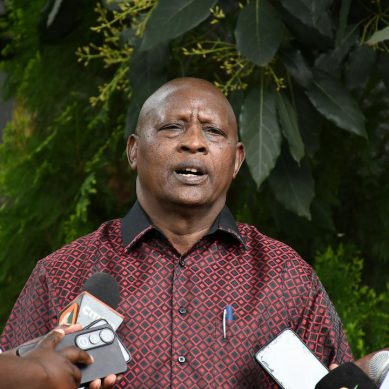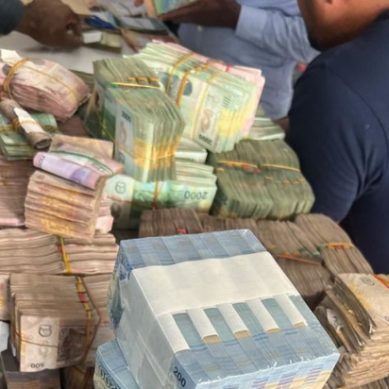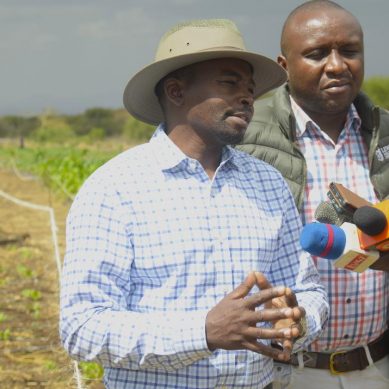Why mistrust between warring communities creates an arms race among pastoralists in Kenya
Free movement across the rangelands is central to both the local economy and the pastoral lifestyle. But the creation of county borders following devolution in 2013 has interrupted that mobility and led to boundary disputes – particularly in areas with abundant grazing land, water and minerals, with communities vying for control.
Kenya’s security paradox: Sandwiched between bandit communities citizens in the north query deployment of elite police to Haiti
The North Rift region is made up of five counties: Turkana, Baringo, Samburu, Elgeyo Marakwet and West Pokot. It’s known for its beautiful rugged terrain, arid landscapes and rich cultural heritage. Pastoralist communities – including the Turkana, Pokot, and Samburu – dominate the region.
Rebuilding ancient Chwezi Empire: Why Ugandan and Rwandan leaders stash loot in Israel, want bigger East African Community
“We came from the beginning of the Nile where God Hapi dwells, at the foothills of The Mountains of the Moon.” “We,” meaning the Egyptians, as stated, came from the beginning of the Nile. Where is “the beginning of the Nile?” The farthest point of the beginning of the Nile is in Uganda; this is the White Nile. Another point is in Ethiopia. The Blue Nile and White Nile meet in Khartoum; and the other side of Khartoum is the Omdurman Republic of Sudan. From there it flows from the south down north. And there it meets with the Atbara River in Atbara, Sudan. Then it flows completely through Sudan (Ta-Nehisi, Ta-Zeti or Ta-Seti, as it was called), part of that ancient empire which was one time adjacent to the nation called Meroe or Merowe. From that, into the southern part of what the Romans called “Nubia,” and parallel on the Nile, part of which the Greeks called “Egypticus”; the English called it “Egypt” and the Jews in their mythology called it “Mizrain” which the current Arabs called Mizr/Mizrair. Thus it ends in the Sea of Sais, also called the Great Sea, today’s Mediterranean Sea. When we say thus, we want to make certain that Hapi is still God of the Nile, shown as a hermaphrodite having the breasts of a woman and the penis of a man. God Hapi is always shown tying two symbols of the “Two Lands,” Upper Egypt and Lower Egypt, during Dynastic Periods, or from the beginning of the Dynastic Periods. The lotus flower is the symbol of the south, and the papyrus plant, the symbol of the north.
Kenya’s long distance running evolves into death trap ‘running community’ as turns against one another
Cheptegei Olympic runner Cheptegei’s horrific death after being doused with petrol and set on fire by her boyfriend has again brought to the fore Kenya’s harrowing history of domestic violence against female athletes.
Land dispute, petrol attack and 80 per cent body burn: How Ugandan athlete with roots in Kenya met painful death
Rebecca Cheptegei’s parents said their daughter bought land in Trans Nzoia to be near the county’s many athletic training centres. A report filed by the local chief said the two were heard fighting over the land where her house was built before the attack.
How the spirit of ‘live and let live’ in Busoga Kingdom has been hijacked, defiled by Museveni and fellow Tutsi gladiators
The current Kyabazinga of Busoga, William Wilberforce Kadhumbula Gabula Nadiope IV was appointed an ambassador of special duties by President Tibuhaburwa Museveni (The New Vision, 2017) in addition to giving him a monthly allowance of Ush60 million ($16,110) and funds to study for a PhD degree.
As Kenyan police in Haiti lament about salaries and equipment, US is planning UN peacekeeping force to fight gangs
The US is mulling a UN peacekeeping operation in Haiti as one way to secure funding and staffing for a Kenya-led mission deployed to quell gang violence in the Caribbean country, a top US diplomat said on Wednesday. Brian A. Nichols, US assistant secretary for Western Hemisphere affairs, spoke hours...
Kenya private sector business picks up as country puts behind impact of tax protests on economy
In June, President William Ruto discarded the government’s finance bill for the year, which contained tax hikes estimated to be 346 billion shillings ($2.69 billion), following deadly street protests.
Linking Busoga, Buganda and Luhyia kingdoms: East Africa’s most advanced indigenous nations in lacustrine region ravaged by colonialism
The similarities between the Luhyia and Basoga may suggest that there existed a powerful and extensive nation in this part of the Lake Victoria basin that Arabs and white colonialists interfered with, thereby interrupting its political, social and economic transformation and progress, despite the fact that it was part of the Kitara Empire (Kwayera, pers. comm) of the Chwezi. As I will show elsewhere in this treatise, the area was very rich in minerals – both gold and rare earth minerals. In fact, Buganda sub-imperialism benefitted a lot from this wealth.
US-based Climate Rights International urges banks and insurers to withhold funding for Uganda’s oil development
The report is the first of its kind to detail serious allegations against CNOOC, one of a number of partners in the project. Based on dozens of interviews, it cites forced evictions, inadequate or non-existent compensation for land and other assets, coercion and intimidation in land acquisition, loss of livelihood and sexual violence.















